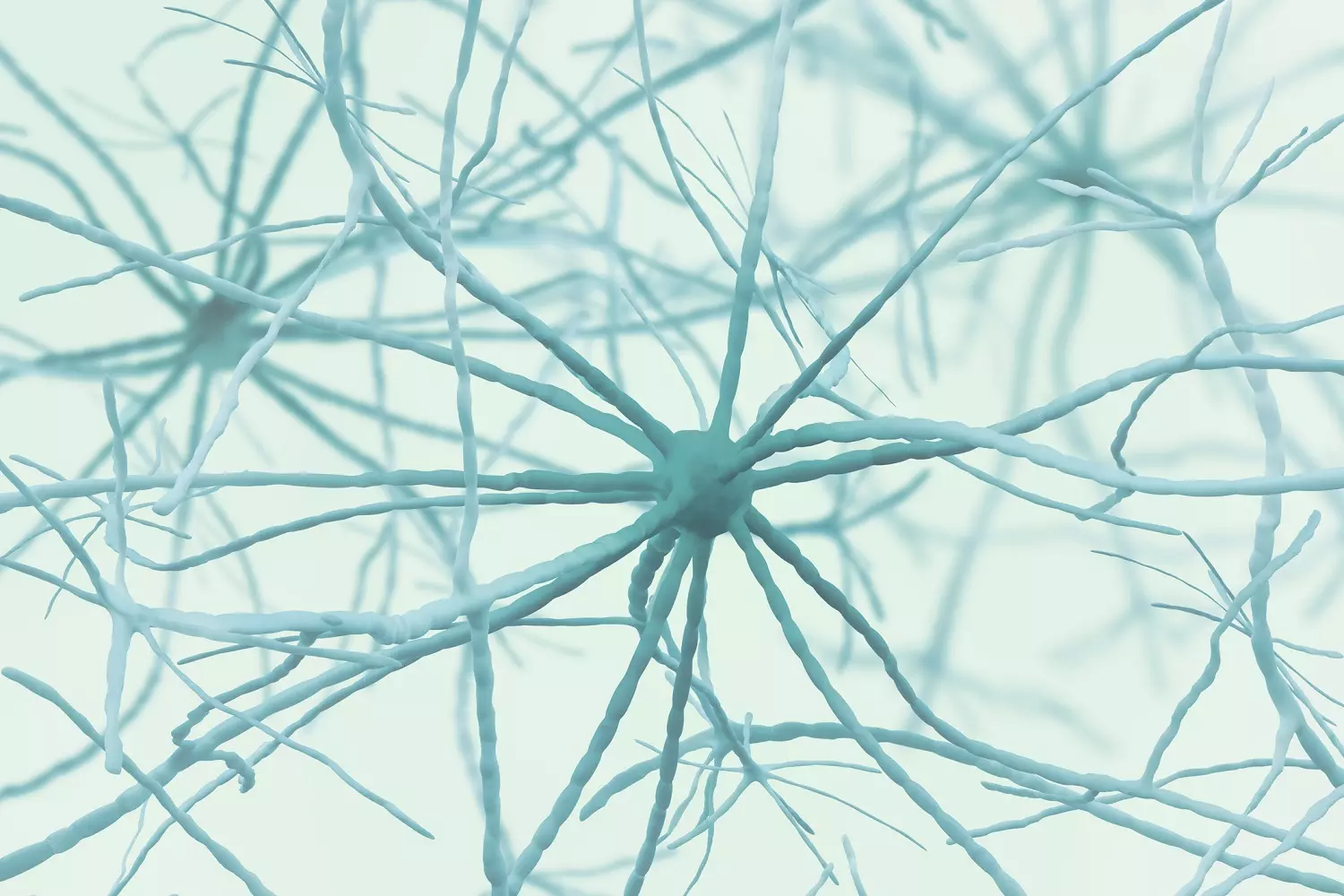The nervous system’s central component is the neuron or nerve cell. A neuron is an electrically excitable cell that processes and transmits knowledge by electro-chemical signaling. Unlike other cells, neurons never divide, neither do they perish to be replaced by new ones. By the same token, they usually cannot be replenished after being lost, although there are a few exceptions.
The typical human brain has about 100 billion neurons and many more neuroglia which serve to support and protect the neurons. Each neuron may be linked to up to 10,000 other neurons, passing signals to each other via as many as 1,000 trillion synaptic connections, equivalent by some estimates to a computer with a 1 trillion bit per second processor. Estimates of the human brain’s memory capacity differ wildly from 1 to 1,000 terabytes. In comparison, the 19 million volumes in the US Library of Congress represents about 10 terabytes of information.
Unlike most body cells, neurons in the brain are only able to divide to fashion new cells during fetal development and for a few months after birth. After that, no new brain cells are formed, although existing ones may increase in size until the age of about eighteen years. Neurons are designed to last a lifetime.
Information transmission within the brain, such as takes place during the processes of memory recording and retrieval, is achieved using a combination of chemicals and electricity. It is a very complex process involving an array of interrelated, multifaceted steps.
Electrical Connections
A typical neuron possesses a soma (the cell body, dendrites [long, feathery filaments forming the “dendritic tree”]) and a single axon (a special, extra-long, branched cellular filament).
Every neuron maintains a voltage gradient across its membrane, due to metabolically-driven differences in ions of sodium, potassium, chloride, and calcium within the cell, each of which has a different atomic charge. If the voltage changes significantly, an electrochemical pulse called an action potential (or nerve impulse) is generated. This electrical activity can be measured and displayed as a waveform called brain wave or brain rhythm.
An action potential travels rapidly along the cell’s axon and is transferred across a specialized connection known as a synapse to a neighboring neuron, which receives it through its feathery dendrites. A synapse is a complex membrane junction or gap used to transmit signals between cells, and this transfer is therefore known as a synaptic connection. A typical neuron fires 5 – 50 times every second across its synapse.
Each individual neuron can form thousands of links with other neurons, giving a typical brain well over 1000 trillion synapses. Functionally related neurons connect to each other to form neural networks. The connections between neurons are not static, though: they change over time. The more signals sent between two neurons, the stronger the connection grows, and so, with each new experience and each remembered event or fact, the brain slightly re-wires its physical structure.
Chemical Connections
The interaction of neurons is not merely electrical, though, but electro-chemical. Each axon terminal contains thousands of membrane-bound sacs called vesicles, which in turn contain thousands of neurotransmitter molecules each. Neurotransmitters are chemical messengers that relay, amplify, and modulate signals between neurons and other cells. The two most common neurotransmitters in the brain are the amino acids glutamate and GABA; other important neurotransmitters include acetylcholine, dopamine, adrenaline, histamine, serotonin, and melatonin.
During childhood, and particularly during adolescence, a process known as “synaptic pruning” occurs. Although the brain continues to grow and develop, the overall number of neurons and synapses is reduced by up to 50%, removing unnecessary neuronal structures and allowing them to be replaced by more complex and efficient structures, more suited to the demands of adulthood.
When stimulated by an electrical pulse, neurotransmitters of various types are released, and they cross the cell membrane into the synaptic gap between neurons. These chemicals then bind to chemical receptors in the dendrites of the receiving neuron. In the process, they cause changes in the permeability of the cell membrane to specific ions, opening up special gates or channels which let in a flood of charged particles.
This affects the potential charge of the receiving neuron, which then starts up a new electrical signal in the receiving neuron. The whole process takes less than one five-hundredth of a second. In this way, a message within the brain is converted, as it moves from one neuron to another, from an electrical signal to a chemical signal and back again, in an ongoing chain of events which is the basis of all brain activity.
What God Has to Say
Although the Bible does not mention the brain, it has a lot to say about the “mind, soul, and heart.” In fact, the Bible uses these three words often and interchangeably to describe the “essence” of a person.
Atheists believe the brain alone is responsible for consciousness and that when it dies so does the person. The Bible portrays a different certainty for people.
In the book of Genesis, God breathed into Adam the breath of life and he became a living soul, made in the image of God (Genesis 1:26; 2:7). At the time of our passing, the soul leaves the body without any further need for the brain. Paul referred to this mystery when writing about the separation of “body and soul” in 2 Corinthians 5:8 wherein the apostle said, “We are confident, yes, well pleased rather to be absent from the body and to be present with the Lord.”
Although Paul was alluding to physical death, a believer can be present with the Lord now, in this life, by having the mind of Christ (1 Corinthians 2:16). Having the mind of Christ means we look at life from our Savior’s perspective by possessing His values, thoughts, and holy desires. It means to think Godly thoughts and dismiss worldly thoughts (Isaiah 58:8). Possessing the mind of Christ means we will interact with others in the same way Jesus did two-thousands years ago by living in full dependence on God through the power of the Holy Spirit.”
God alone is responsible for Intelligent Design (Genesis 1:1). God alone is to be glorified for His imaginative genius, an attribute we rarely think about, envision, or comprehend. It is this genius, so often overlooked by the atheist, which is seen in the brain’s anatomy. The brain itself testifies of its Creator’s existence with every neuron firing.







